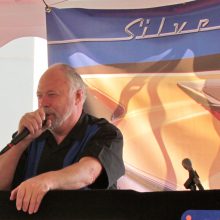
Editor’s note: We’re taking a break from our usual “Future classics” format to share the annual “Hagerty Hot List,” the classic car insurer’s yearly list of new cars it thinks will become collectible within the next 25 years.
TRAVERSE CITY, Mich. – With so much attention focused on the record-breaking classic car sales and their rapidly increasing values, many enthusiasts often wonder which cars of today will be collectible down the road. Always keeping an eye on the market, the collector car experts at Hagerty release their annual list of vehicles that stand out as likely being collectibles within the next 25 years.
In order to be considered for the Hagerty Hot List, the vehicle must be produced within the 2014 model year with an MSRP of less than $100,000. Special consideration is given to newly launched versions not appearing on previous Hagerty Hot Lists.
“Most new car news focuses on the latest interactive technology, alternative power sources, and the race to increased efficiency,” said McKeel Hagerty, president and CEO of Hagerty. “But for a car to be collectible in the future, it has to be cool right off the assembly line. A collectible car has to grab you and not let you go.”
The 2014 Hagerty Hot List (with base prices)
- Jaguar F-Type R ($99,000) – The British marque makes a triumphant return to the sports car scene with the growling F-Type. Boasting a healthy V8 engine and rear drive platform, the F-Type will surely be a driving enthusiast choice soon enough.
- BMW M5 Sedan ($92,900) – A performance-oriented sedan with an old school manual transmission is quickly becoming an extinct species. While more drivers shun the thought of using three pedals, we applaud BMW for keeping this option alive in this segment.
- Chevrolet COPO Camaro ($90,000) – Chevrolet basically guarantees future collectability of the drag-strip ready COPO Camaro by limiting production to 69 units. It is only appropriate that the first production model will be sold at the upcoming Barrett-Jackson auction in Arizona.
- Maserati Ghibli S ($75,000) – The Ghibli returns for a third time, and this time as a four door. The twin turbochargers feeding the 410 horsepower 3.0 liter V6 ensures the Ghibli is more than just pretty curves.
- Alfa Romeo 4C ($54,000) – A budget-friendly Italian sports car might sound like an oxymoron, but the 4C is saying all the right words. With a carbon fiber tub leading to a curb weight of just more than 2,100 pounds, this sporty two-seater isn’t pulling any punches as it aims at the U.S. market.
- Chevrolet Corvette ($51,000) – The Corvette is the most popularly collected vehicle in the U.S. so GM had no choice but to make the new C7 great. It is a nice mix of Corvette heritage with real world performance figures and technology goodies. Dollar for dollar this is the best performance buy on the market.
- Nissan 370Z NISMO ($43,000) – The Nissan Z car has amassed a following and the 370Z NISMO is the latest and greatest in this lineage. With Japanese cars now representing a standalone class of collectables in a way that we have not seen in the past, 350 and 370Zs will not be ignored by collectors in years to come.
- Dodge Challenger Shaker ($36,995) – While the styling of the new Challenger has always harkened to the glory days of muscle cars, nothing says horsepower wars like a bulging hood scoop. Dodge went back to the roots and added the iconic shaker hood to atop of a healthy HEMI engine and R/T options package. We will take ours in Plum Crazy Pearl.
- Jeep Wrangler Rubicon X ($35,095) – Vintage SUV’s are the fastest-growing segment and Jeep leads that pack. While more comfortable than its bare bones workhorse ancestor, the Rubicon X is highly capable for not a lot of money. Many of these now compete at events, which means they will one day command respect at vintage off-road demonstrations.
- Ford Fiesta ST ($21,400) – Following the enthusiasm surrounding the Focus ST, the little brother Fiesta ST has been pumping the same iron. Youthful buyers attracted to compact cars don’t always want to sacrifice performance. The Fiesta looks, sounds and acts the part of a modern day enthusiast’s car.
Editor’s note, part 2: So, do you agree with the Hagerty Hot List? Let us know what you’d add or subtract in the Share your thoughts! section below.




















